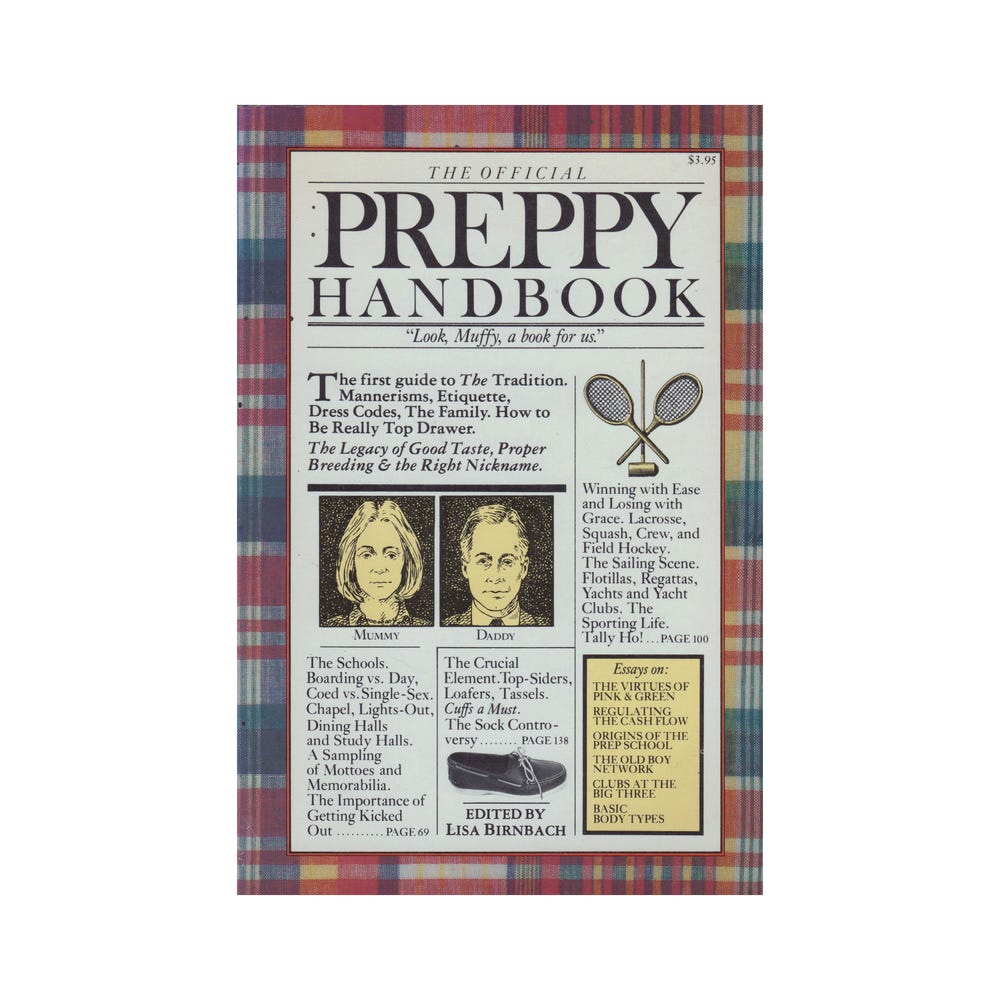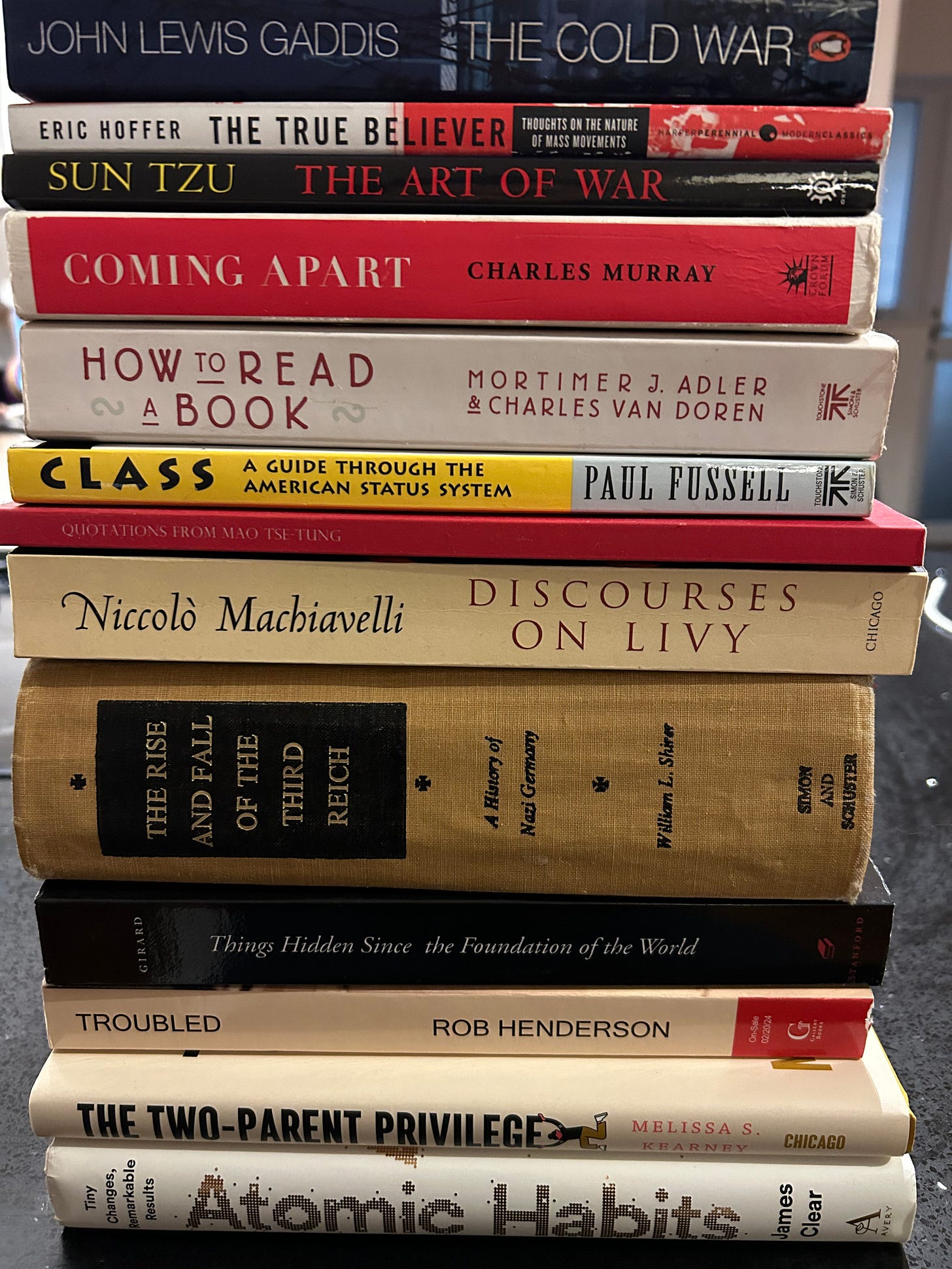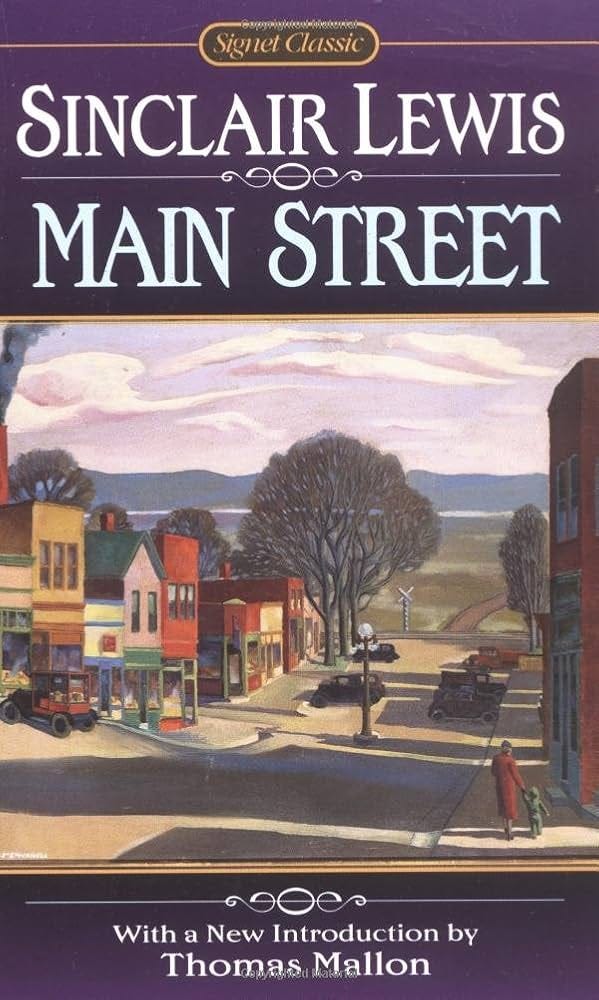In Trump’s America, where are the WASPs for “good taste”?
I can't find any old-school, old-money stereotypes of the kind we desperately need.
There is a piece I have been trying to assign at Arc, but I have not been able to find the right person to write it. It’s a piece about Wasp understatement—simply put, the old idea that less is more, and that we should resist ostentation, even to the point of being ostentatious about being against ostentation. Basically, I have wanted to commission a piece arguing that the old preppy Wasp class—the kind of people who pretended not to have money even when their families had had money since time immemorial; who made a point of wearing threadbare clothes and walking on threadbare carpets; who drove their cars into the ground—are more necessary than ever, but seem to have disappeared. The ideal author of the piece would him- or herself be a White Anglo-Saxon Protestant, writing cheekily but defiantly about his or her own class, tongue somewhat but not fully in cheek. The writer would be conversant with the sociology of E. Digby Baltzell and the pop sociology of Lisa Birnbaum’s Preppy Handbook.
I’ll circle around in a minute to how this matters in Trump’s America, but first I want to quote an excerpt from my forthcoming book, about an antisemitism scandal at Princeton in 1958 (it’s coming two books hence, the book after my Judy Blume biography that’s coming in March 2026). In this excerpt, I am paraphrasing and quoting a senior essay by Princeton senior Philo Rockwell King, class of ’48, in which he is describing the ideal sophomore candidate for Princeton’s selective upper-class eating clubs (bold is mine):
As in all times and places, style at Princeton in 1948 was not codified anywhere; the second anybody wrote down the rules, they would have been obsolete. One simply had to know. The rules “are not conformed to completely—they are not even completely known,” King writes. He identifies two “uniforms,” one for everyday “campus wear,” the other for “dressing up.” “For campus wear, one accepted shoe is the dirty white buckskin.” It’s important that one’s bucks not look new—“There are actually informal contests to see who can get their shoes to look the oldest and the dirtiest.” Brown leather shoes should be worn “badly battered” or “polished and well-heeled,” but not in between. “Black and white saddle shoes are preferred over brown and white. Black shoes are not accepted.” White socks are best; argylls are permissible but “have the function of ‘conspicuous consumption.’” Sweaters should be black; other colors “will do,” but they must be solid. High school varsity sweaters must be worn “inside-out,” and this is a fashionable thing to do. “The letter is not supposed to be showing.” Even if there is no letter, it’s still smart to wear the sweater inside out, because this gives the impression that there might be a letter on the reverse side. The letter carries prestige, but not if it is flaunted. Better, then, to pretend to be hiding a letter that does not exist than to show off a letter that actually does. King also describes the modish trousers, what shirts to wear, the most acceptable overcoat, and the one permissible reason to don a hat (when it’s raining); he then moves on to an equally exhaustive taxonomy of the stylish formalwear.
When he is done listing all the obscure, invisible, and unstated rules of dress, King sums up the guiding principles: “The campus costume of the Princeton undergraduate thus serves three functions. First, it makes him appear casual and unconcerned; second, it shows that he is ‘plugged in,’ and aware of what is correct and accepted on campus; third, it shows that he might be well-dressed if he chose. These reasons account for the unusual combinations of the expensive wear with the inexpensive, and the old, worn-out clothing with that which carries the suggestion of elegance.”
Obviously, there is a dark side to this code of understatement—it’s a shibboleth, a password, meant to keep people out as well as to signal who is in. The people it was meant to keep out were, among others, the nouveaux riches, those knocking at the doors of the old-monied, those flaunting their new money and trying to take over the (run-down, ramshackle) palace. You will find this dynamic in American culture at least as far back as Edith Wharton. This is from The Age of Innocence (1919):
Forty-eight dresses that had been set aside and never worn, lest one appear vulgar! Now that was breeding.
Anyway, one can easily make fun of the silliness of understatement (and it’s not as if the wealthy class in Wharton is afraid of spending money—they just have obscure rules about how to spend it). But the thing was, at the very least, this ethos, in the U.S., grew into a hedge, a guard, against crass ostentation. When I was in prep school, the thing was to make sure that one’s baseball cap was properly beaten up before wearing; urban legend had it that some of my classmates would run over it with their car, then splatter paint on it—basically, destroy before wearing. This was about the time that J. Crew began selling jeans and tees that were pre-frayed.
This was an arbitrary code, to be sure, but it was easily broken, and it did not rely on money to break it. It traded a hierarchy of wealth for one of savvy. Laugh if you must, but today, in the age of Trump’s Versailles-like Oval Office, we have swung too far the other way, non? We’re back to money—flashy, glitzy money—which may be more honest, but is no less fair, and is kind of gross.
Here’s Amy Odell in the Times on the Bezos wedding:
Some of the world’s richest people are gathering for the wedding of Jeff Bezos, the world’s third-richest man, in one of the world’s most touristy cities, Venice, and it’s easy to ask: What happened to understatement and restraint? In the run-up to the wedding, Mr. Bezos was photographed by paparazzi on the deck of his yacht with his intended, Lauren Sánchez, both in their swimsuits, frolicking in foam like a couple of college kids on spring break. Meanwhile, missiles and bombs have been falling just a few time zones away.
Not so long ago, members of high society were fixated on trying to low-key their way out of the perils of income inequality. Minimalism and quiet luxury were in vogue. But in the wake of President Trump’s second election, it’s the luxe life at full volume. He gilded the White House, turning it into a rococo Liberace lair. Swaggy and braggy have replaced stealth wealth. Flaunting it is in. For women, that means sequins, diamonds, tight silhouettes and big hair. TikTok’s latest star, Becca Bloom, has drawn millions of fans by regularly sharing videos of her lavish jewelry and Hermès shopping hauls. Even the bandage dress is trending again. The breast implant business just keeps getting bigger and is expected to reach $4.6 billion by 2030, up from nearly $3 billion in 2024.
(Bezos’s ex-wife is an alumna of Hotchkiss, the echt–old money New England prep school. What I’d give to have her thoughts on his second wedding.)
Here is
’s photo of his stack of books on Substack, which I include because I take his inclusion of Fussell’s Class, the great discourse on these matters, to be some sort of omen:Here is my buddy
in a recent post:Much has been written about Trump’s dictator aesthetic—here’s one excellent piece in the New York Times on his “Gilded Rococo Nightmare” of an Oval Office. To me, the overarching feature is its stupidity. Obviously, bragging about being strong is a sign that one is weak. Gilding everything in cheap gold makes one look cheap, not wealthy. Ridiculous plastic surgery makes women look fake, not beautiful. And yet—a lot of people don’t get it. As Fran Lebowitz said in 2016, Trump is a poor person’s idea of a rich person. Anyone with taste knows that he’s pathetic. But most people don’t have taste. They see gold, they think rich.
Jay’s invocation of taste—an invocation that every atom of my being wants to assent to—does make me recall Dave Hickey’s great line that “good taste is the residue of someone else’s privilege.” Ouch, that is apt.
Still, while “good taste” may indeed a stand-in for privilege, now that we are awash in presidential bad taste, where are the latter-day George H.W. Bushes, in their understated and well-worn J. Press pinstripes? Where is the likes of the late Richard Darman, Bush’s undersecretary of the Treasury, of whom the Washington Post once wrote, “Dick Darman, on the other hand, affects a casual disregard for appearances. He cuts his own hair, and does it badly: Swept back from his forehead, his straight brown hair ends, above his collar, at a miscellany of lengths. Staff members say he sometimes comes to work in scuffed loafers whose tassels are long gone. His collars are frayed, his suits are shiny with wear, his neckties are the kind that never run any danger of being in or out of fashion”? (Is it accidental that Darman once said that “government could involve moral and esthetic virtue”?)
The point is, there was once a class of men and women, in government and business, who would have been a counterweight to the worst sort of Trump/Bezos ostentation, which does belly up to stupidity; and when this class was revered as the pinnacle of American society, the young Turks looking to win acceptance would have—maybe—worried about what the Waspy types thought. And they would have taken their aesthetic cues from the Bushes and Darmans—and from the Jews who made that style, like Jacobi Press, and from the Jews who also dressed in it, like Calvin Trillin, and from the people of all races and ethnicities who had absorbed the Anglophile-cum-Wasp ethos of understatement—rather than from MMA influencers and Pete “Slick” Hegseth. And maybe—it’s possible, right?—they would have also looked at those clothes and imbibed not just a sartorial style but a style of combat, or not-combat, or anti-combat: civilized and reasonable, more the plainspoken, restrained ethos of Main Street,
and less the gladiatorial look and feel of Wall Street:
I realize I am gesturing toward something that is hard to pin down with evidence. (Substack is for vibes, not evidence.) But I think we can say with reasonable certainty that there we are in a severe ebb for understatement, restraint, humility, and modesty (not my personal strong suits, which may be why I value them in others). And it has something to do with the sunsetting of an older class of people who valued these attributes, having been replaced by the scorching overhead sun of people who believe in aggression and domination, in clothes as in politics.
Now if only I could get someone to write that essay!
Name of the Week
McGraw Wolfman, cooking video-journalist. I’ll say no more.








